Mechanical temperature gauge
Giá gốc là: 235.000 ₫.215.000 ₫Giá hiện tại là: 215.000 ₫.
Cập nhật lần cuối ngày 20/06/2023 lúc 09:13 chiều
What is a mechanical temperature gauge?
A mechanical temperature gauge is a collection of temperature measuring gauges that measure the temperature of the substance being measured using mechanical principles combined with the laws of physics, including thermal expansion and principles of motion transmission and transformation.
The structural characteristics of a mechanical temperature gauge involve being entirely constructed from mechanical components rather than electronic components. This brings several advantages to the device, such as low cost, applicability in various working conditions, high durability and stability, and ease of use.
Mechanical temperature gauges are available in different types based on their construction and operating principles. These types include bimetallic thermometers, gas-filled thermometers, and liquid-filled expansion thermometers.
The temperature range of mechanical temperature gauges is very wide, ranging from -200°C to 700°C. With temperature sensing elements made from materials capable of withstanding temperature, pressure, and chemical resistance, this measuring device can be used in most industrial applications.

Technical Specifications
Mechanical temperature gauges are provided by various manufacturers, offering a wide range of designs, materials, measurement ranges, etc. To assist customers in choosing a temperature gauge device more easily, we have compiled the following basic technical specifications for pressure gauges:
- Common temperature measurement ranges: From -60°C to 40°C, -20°C to 100°C, 0°C to 500°C, etc.
- Options for gauge case materials: Stainless steel, aluminum alloy, carbon steel
- Dial diameter: 63 mm, 75 mm, 100 mm, 160 mm, etc.
- Gauge types: Bottom connection, back connection, panel mount
- Connection options: NPT, PT, PF threaded connections
- Thread diameter: 3/8″, 1/2″, 3/4″
- Working pressure: PN10, PN20, PN25, etc.
- Temperature units: ℉, ℃
- Temperature measurement accuracy: 0.75%, 1%, 2%
- Manufacturers: Yamaki, Wika, Wise, etc.
- Country of origin: China, South Korea, Germany, USA, etc.
- Warranty policy: The product is covered by a 12-month warranty.

Structure and Operating Principles of Mechanical Temperature Gauges
As introduced at the beginning of the article on mechanical temperature gauges, there are three different types of constructions applied, including bimetallic, liquid expansion, and gas expansion. However, the constructions of liquid expansion and gas expansion types are fundamentally similar. Therefore, let’s explore the structure of bimetallic temperature gauges and gas expansion temperature gauges together.
Structure and Operation of Bimetallic Temperature Gauges
Bimetallic temperature gauges, as the name suggests, use a temperature sensor component composed of two materials joined together (usually two metals with different coefficients of thermal expansion). To measure the temperature of the fluid to be measured, the probe of the gauge is immersed in the fluid. When there is a temperature change, the uneven expansion between the two materials causes significant deformations, and the degree of deformation is proportional to the temperature change.
The deformation of the bimetallic temperature sensor is transmitted to the clock hands through a special mechanism (such as a drive shaft or gear transmission, depending on the product).
To better understand the operation of the bimetallic temperature gauge, let’s explore its structure below.

The bimetallic mechanical temperature gauge consists of five main components:
- Temperature sensor probe: The sensor probe is designed in the shape of a hollow cylindrical metal rod to accommodate the bimetallic temperature sensor. The temperature sensor probe is usually made of stainless steel 304, stainless steel 316, or brass to ensure the transmission of temperature from the measured fluid to the bimetallic temperature sensor. It also needs to withstand the temperature, pressure, chemical resistance, and oxidation resistance caused by the fluid.
- Bimetallic temperature sensor component: The bimetallic temperature sensor component is made by joining and fixing two metal pieces with different coefficients of thermal expansion. The shape of the bimetallic sensor varies depending on the type of gauge, commonly in the form of a spiral or helical shape (as shown in the image). This component expands and changes its shape as the temperature of the measured fluid changes.
- Drive mechanism: The structure of the drive mechanism can vary, including a rotating drive shaft with one end connected to the bimetallic sensor and the other end linked to the clock hands. Alternatively, some devices use gear mechanisms. The purpose of this component is to transmit and transform the small changes in the size of the temperature sensor component to the clock hands.
- Connecting stem: This component is responsible for securely attaching the temperature gauge to the system being measured. It uses external and internal threaded connections between the stem of the gauge and the system. The threads are designed according to standard manufacturing specifications, and the temperature gauge stem is usually conical or straight in shape.
- Clock hands: The clock hands indicate the measured temperature value. They are usually made of lightweight aluminum alloy to ensure resistance to vibrations during operation and improve accuracy in temperature measurement.

Structure and Operation of Gas Expansion Thermometer
The mechanical gas expansion thermometer has a similar external appearance to a bimetallic thermometer. However, these two types of thermometers differ completely in terms of their construction and working principles.
The mechanical gas expansion thermometer operates on a principle similar to that of a more mechanical pressure gauge and relies on the deformation of the Bourdon tube. The temperature measurement process of the device is fundamentally as follows:
The Bourdon tube is connected to the temperature sensing element, which contains special types of gases or liquids. These substances expand and tend to increase in volume as the temperature rises. However, the internal space of the Bourdon tube and the temperature sensing element hardly change, resulting in an increase in working pressure.
As the pressure increases, it acts on the inner wall of the Bourdon tube, causing the tube to deform and undergo a certain displacement. Through components such as the transmission rod and gears, the movement of the Bourdon tube is transmitted to the clock hand. At this point, the working temperature value of the substance to be measured is indicated by the numerical readings on the clock face.
The basic structure of a mechanical gas expansion thermometer, in the form of gas expansion, includes the following components:
- Connecting joint: Most conventional mechanical thermometers use a threaded connection to secure the thermometer to the system being measured.
- Temperature sensing element: The extended sensing element comes into contact with the substance to be measured to absorb heat. This component is made of brass or stainless steel to meet durability and heat transfer requirements.
- Expansion gas: Typically, one of the inert gases such as nitrogen, helium, or argon is used. These gases do not undergo chemical reactions with the Bourdon tube and the temperature sensing element. They tend to expand as the temperature rises.
- Bourdon tube: It is a curved hollow tube in the shape of the letter “C” or a spiral shape. It deforms when the pressure of the “expansion gas” inside changes.
- Transmission mechanism: This includes various components that transmit and transform the movement of the Bourdon tube to the clock hand.
- Clock hand: The rotational motion of the clock hand on the scale corresponds to the measured temperature.

Comparison of Dual Metal and Gas Expansion Mechanical Temperature Gauges
The mechanical temperature gauge is provided with two main product lines: one that uses a dual metal sensing element and another that uses a gas sensing element.
To help readers understand these two product lines better, we have conducted a comparison of these two temperature gauges based on the following aspects:
- Price: The dual metal type has a lower price compared to the gas-driven type.
- Temperature range: The gas-driven type has a wider temperature measurement range. According to our reference from Wika (a reputable manufacturer of measuring instruments in the United States), the gas-driven type has a maximum measurement range from -200℃ to 700℃, while the dual metal type has a maximum range from -70℃ to 600℃.
- Flexibility: The gas expansion mechanical temperature gauge is considered to have higher flexibility.
- Sensitivity: Due to the characteristics of gas molecules, which have higher thermal dynamics, they heat up and cool down faster than metals. The gas expansion type is evaluated to have higher sensitivity in measurements.

Applications of Mechanical Temperature Gauges
The mechanical temperature gauge is a versatile measuring device widely used in various activities, including production, monitoring, research, and more. Because temperature directly affects many production processes and nearly all activities, the demand for temperature gauges has been present for a long time.
Note: The translation provided assumes the HTML code is to be left intact, with the appropriate formatting and tags.
Here is the translation of the passage from Vietnamese to English, while keeping the HTML code intact:
A few examples of the applications of temperature measuring devices include:
- Temperature control in manufacturing processes: Used to measure temperature in manufacturing processes such as in furnaces, boilers, dryers, or in temperature control devices. The measured parameters from mechanical temperature measuring devices are used to control the temperature during the production process.
- Temperature monitoring in refrigeration systems: Used to monitor temperature in refrigeration systems such as in freezers, coolers, or in air conditioning systems.
- Temperature measurement in scientific applications: Used to measure temperature in scientific applications, including in laboratories, in measuring and testing equipment, in medical devices, etc.

See more product steam boiler temperature gauges.


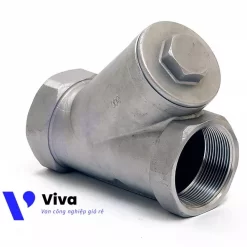
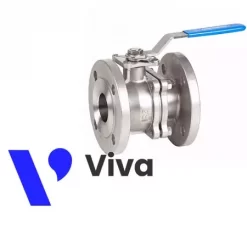

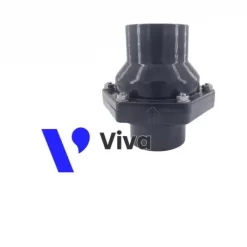
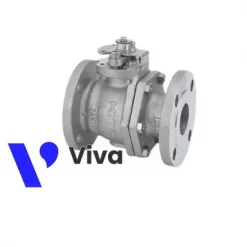


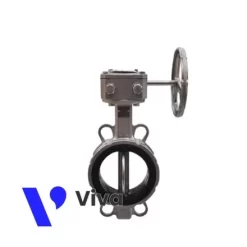

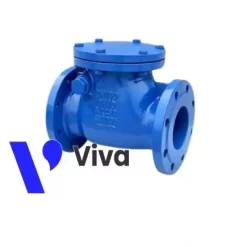
Đánh giá
Chưa có đánh giá nào.